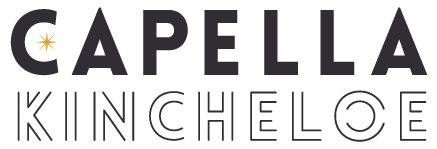Getting the Most From Your Very First Design Projects
You Must Be Selective, Eventually
I have been writing a lot about choosing the right clients and projects. I’ve talked about setting project criteria, can you make money on small design jobs, and the fallacy of design for everyone. I just keep seeing independent interior designers hurting their businesses by accepting the wrong clients and projects.
The bottom line as you progress in your business, you should become more selective about your clients and projects. The goal is to continually refine and define your business.
If you are a brand-new interior designer being selective may not be an option. And so this article is for you.
When you are first embarking on a solo design career, often you don’t have the experience to know who you are as a business owner, what your business will look like and run, or what your special sauce is. Your first few projects are about exploration and understanding. It’s about finding out your likes and dislikes, getting to know the business side in-depth, and learning about clients.
Not Too Selective, At First
This is not the time to put too many criteria or boundaries around yourself. However, you can’t be a martyr and sacrifice yourself for your client either. This is why your first design projects are important - to refine and define who you are as a designer and business owner.
One of my first design projects had no budget and it turned out pretty good. However, looking back on that project I’ve been thinking maybe I should have given a bit more of myself, because while that small design fee I received on that project is long gone, what remains are the photos.
I’ve always been good at boundaries and doing the work I was paid to do. I knew my worth from the start. So at the beginning of my design business, I stuck to that, but I also wonder if perhaps I could have not been as strict with my boundaries to let a little more magic happen.
At the time I had the time.
Deciding on Your First Projects
When you are just beginning your design business, you might be desperate to get any work. But I urge you to still have standards, again, don’t be a design martyr. In many ways, your first projects will set up your business and this is where my advice is going to get hazy - because there are no clear-cut answers. You have to find your balance yourself. The balance between giving too much, client’s asking too much, feeling taken advantage of, getting good photos, getting a good testimonial, referrals, future marketing, etc. In essence, make sure there is something of enough value in it for you.
So when you are deciding on whether to take a project or not when you are first starting, you need to ask yourself: is what I am receiving in return for all my hard work enough? Many times the financial gain could be minimal - but there are other benefits - such as marketing, portfolio photos, experience, referrals, introductions, and testimonials. So if the money sucks, make sure that you are making up for it with other benefits.
Your First Projects Need a Contract
Here is where you have to put on your boss hat and have a conversation before the project begins with your clients negotiating these other benefits. They need to understand that you are taking on their project at a reduced rate to gain experience AND (additional benefit). This combination is your payment for services rendered.
Every time you step into someone’s home to work, you need a contract. If it’s family or friends and it feels awkward, just tell them you want the practical experience for future clients. And in your design fees section, you can spell out your payment (which can include benefits discussed above) for services rendered. This is great experience in a more comfortable space (if you’re not comfortable practicing with friends/ family, it’ll be harder with strangers. This is when you are clear from the get-go what your “payment” includes (such as a design fee/ hourly rate/ portfolio photos/ testimonial, etc.)
Share in the comments: new designers - what are your plans for your first design projects? Established designers - what do you wish you would have done on your first design projects?
About The Author
Hi! I’m Capella and I’m an interior designer who helps fellow designers build their businesses. Forget secrecy and competition, I believe designers should support and uplift each other. By helping and boosting one another, we can elevate the business of interior design together! Hang around a bit and I’ll share all the business “secrets” no one else wants to talk about.




